Abstract
A parentally completed questionnaire was used to investigate the incidence of post-extraction pain in children. Significantly more patients in the study group reported pain following dental extraction than did control patients. Increasing age was significantly associated with the report of pain, but not with the use of a pain medication, even when the degree of difficulty of the extraction procedure was standardized. These findings suggest that the report of pain represents a late learned response while medication usage represents an early learned response. Those patients that reported increased severity of pain were significantly more likely to require a pain medication, but the pain medication was most effective for only mild pain. Additionally, male patients were significantly more likely to report complete effectiveness when pain medication was used. Contrary to some popularly held beliefs, the results of this study indicate that children do experience post-extraction pain and some children experience pain of sufficient intensity to require an analgesic for relief of post-extraction pain. Additionally, for a small group of patients, neither aspirin nor acetaminophen are adequate in fully relieving post-extraction discomfort. For these patients other agents may be indicated to fully relieve pain.
Full text
PDF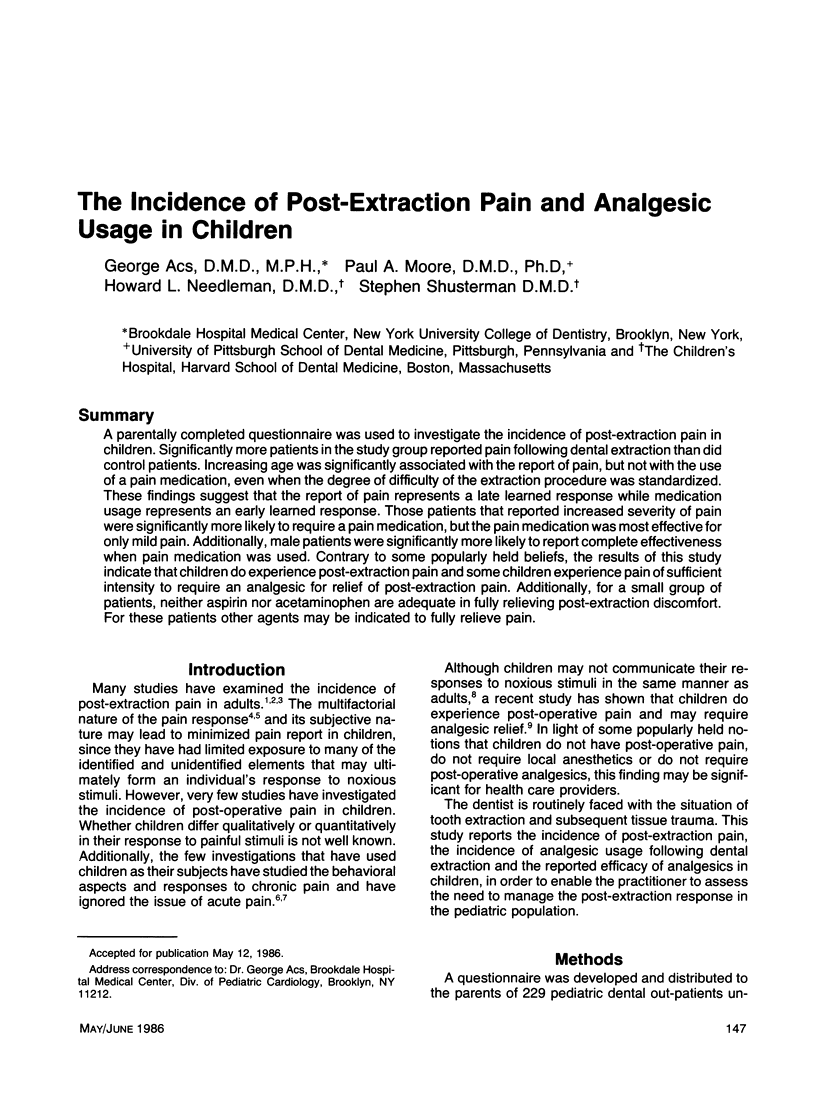
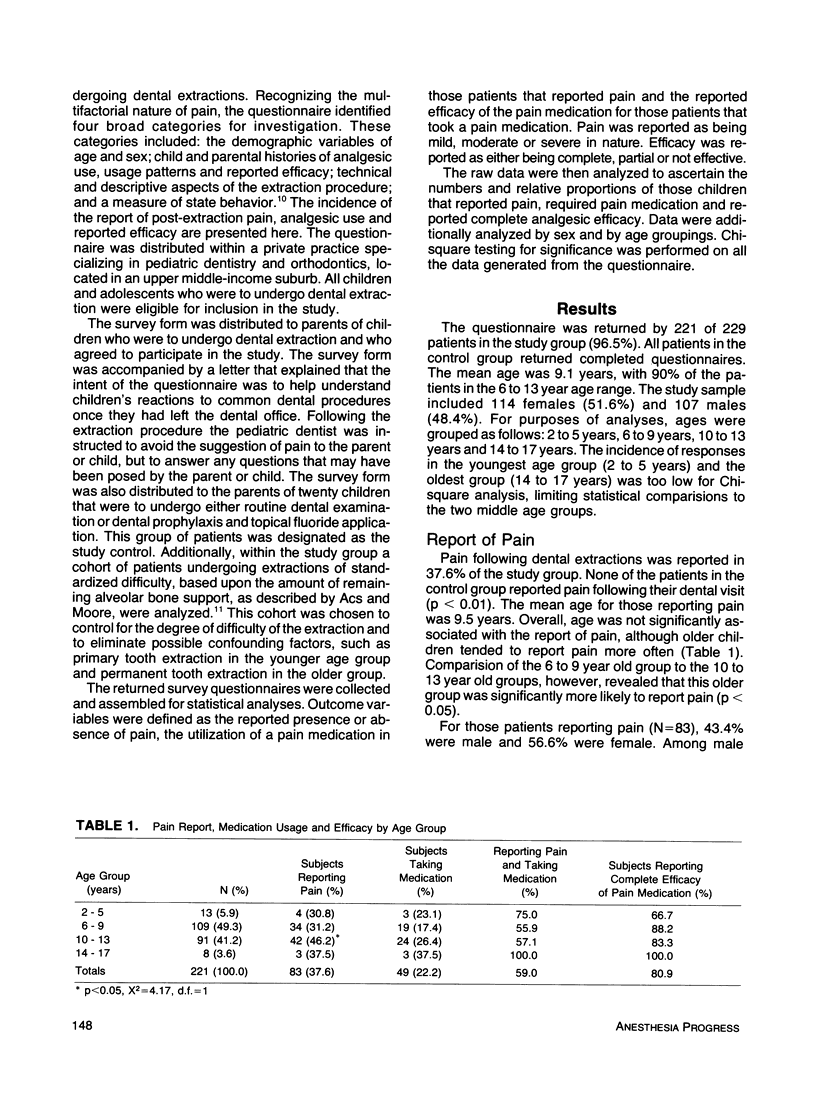
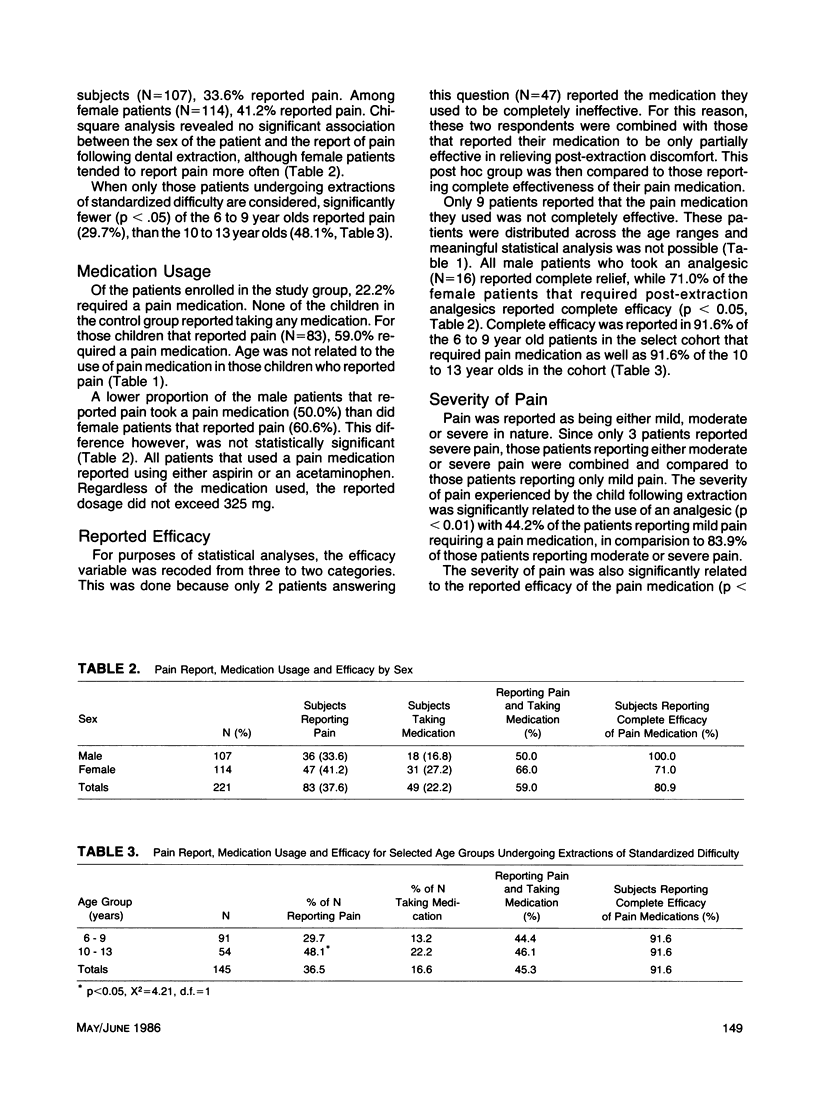
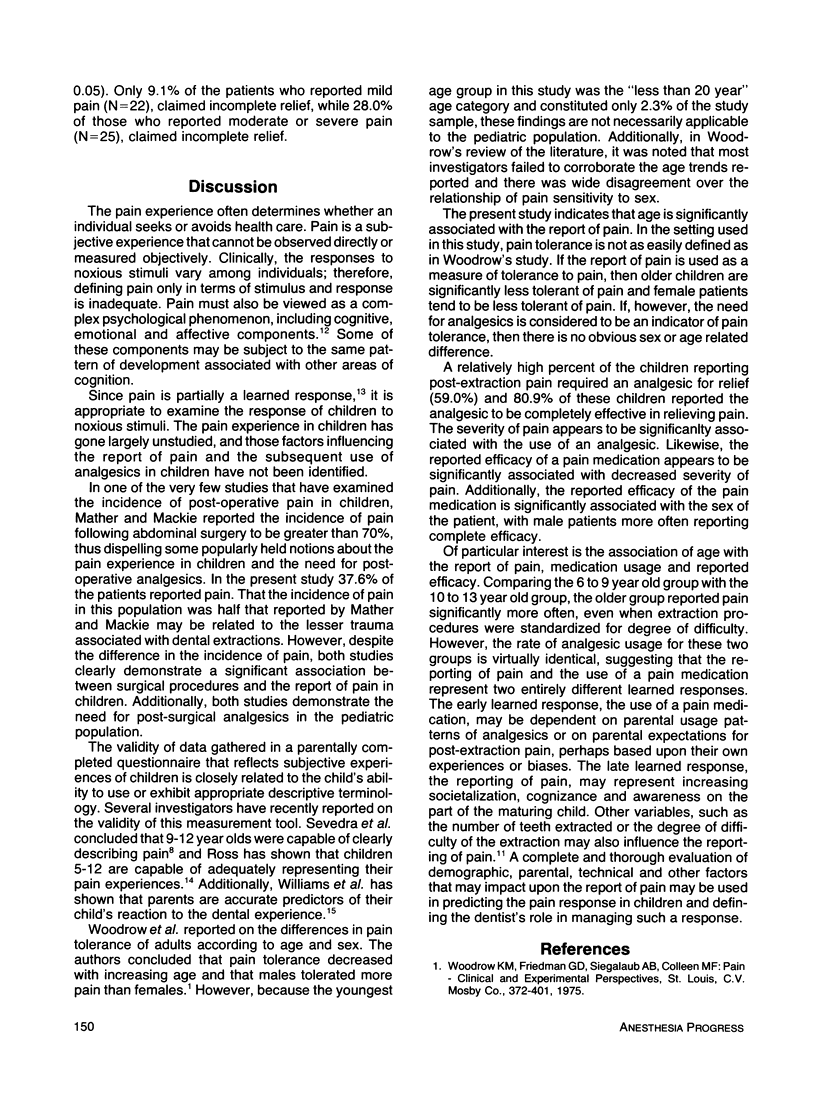
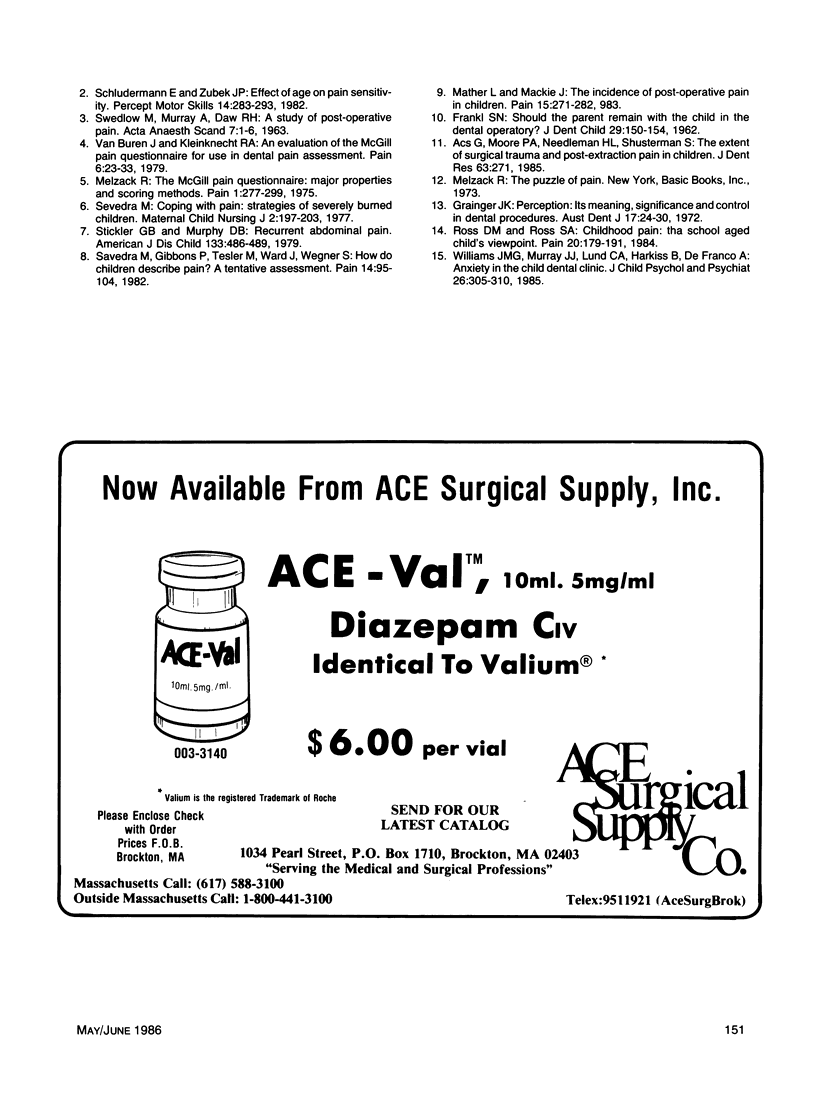
Selected References
These references are in PubMed. This may not be the complete list of references from this article.
- Grainger J. K. Perception: its meaning, significance, and control in dental procedures. I. Introduction and neurophysiological aspects. Aust Dent J. 1972 Feb;17(1):24–30. doi: 10.1111/j.1834-7819.1972.tb02741.x. [DOI] [PubMed] [Google Scholar]
- Melzack R. The McGill Pain Questionnaire: major properties and scoring methods. Pain. 1975 Sep;1(3):277–299. doi: 10.1016/0304-3959(75)90044-5. [DOI] [PubMed] [Google Scholar]
- Ross D. M., Ross S. A. Childhood pain: the school-aged child's viewpoint. Pain. 1984 Oct;20(2):179–191. doi: 10.1016/0304-3959(84)90099-X. [DOI] [PubMed] [Google Scholar]
- SWERDLOW M., MURRAY A., DAW R. H. A study of postoperative pain. Acta Anaesthesiol Scand. 1963;7:1–19. doi: 10.1111/j.1399-6576.1963.tb00201.x. [DOI] [PubMed] [Google Scholar]
- Savedra M., Gibbons P., Tesler M., Ward J., Wegner C. How do children describe pain? A tentative assessment. Pain. 1982 Oct;14(2):95–104. doi: 10.1016/0304-3959(82)90091-4. [DOI] [PubMed] [Google Scholar]
- Stickler G. B., Murphy D. B. Recurrent abdominal pain. Am J Dis Child. 1979 May;133(5):486–489. doi: 10.1001/archpedi.1979.02130050030006. [DOI] [PubMed] [Google Scholar]
- Van Buren J., Kleinknecht R. A. An evaluation of the McGill pain questionnaire for use in dental pain assessment. Pain. 1979 Feb;6(1):23–33. doi: 10.1016/0304-3959(79)90137-4. [DOI] [PubMed] [Google Scholar]
- Williams J. M., Murray J. J., Lund C. A., Harkiss B., de Franco A. Anxiety in the child dental clinic. J Child Psychol Psychiatry. 1985 Mar;26(2):305–310. doi: 10.1111/j.1469-7610.1985.tb02268.x. [DOI] [PubMed] [Google Scholar]


